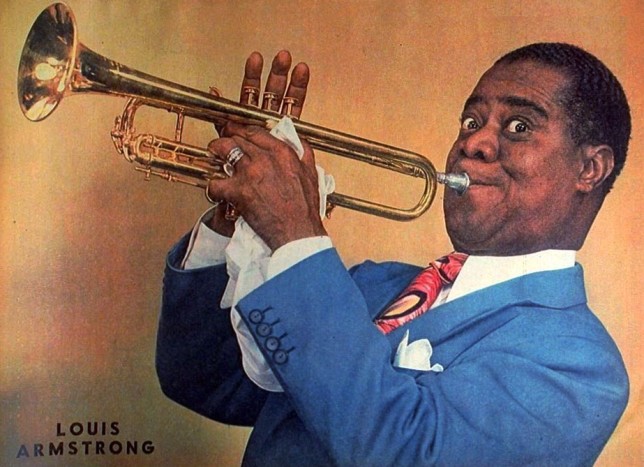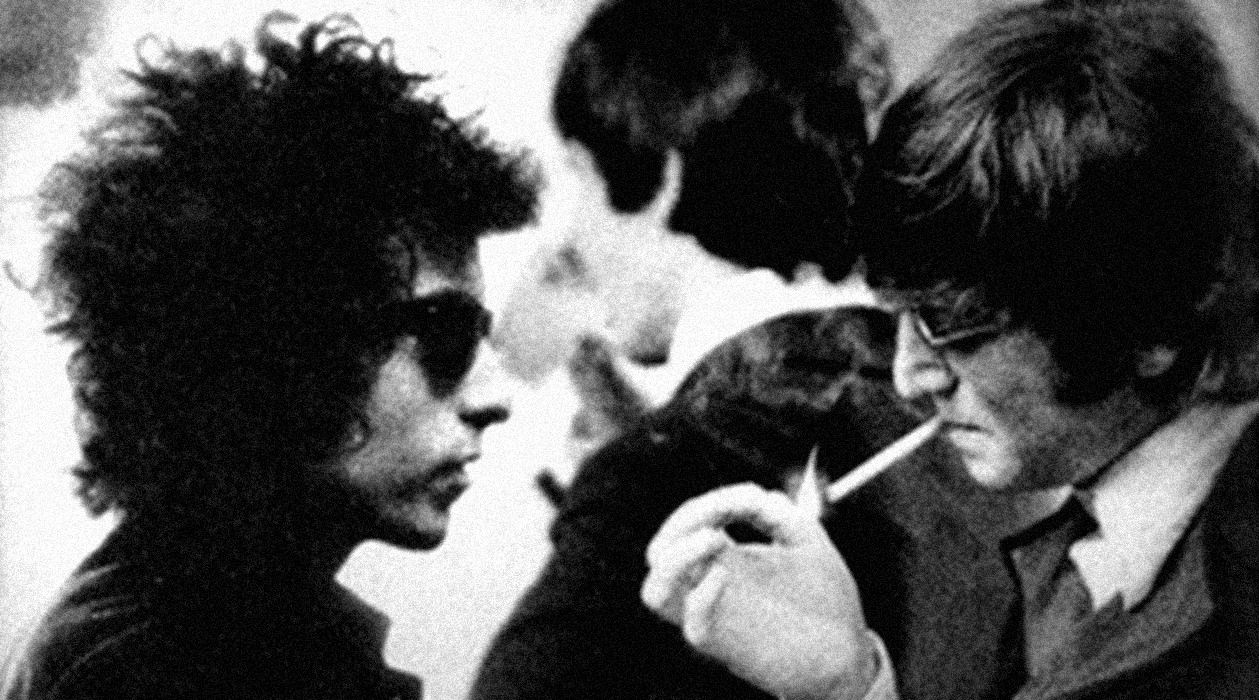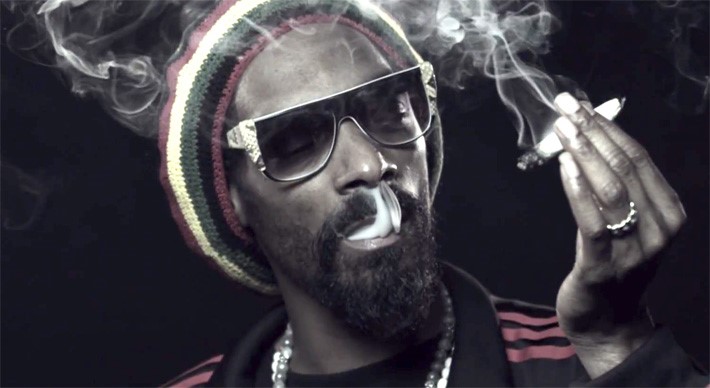The history of marijuana in America is also a history of American popular music.
Cannabis medicines and hashish were sold openly in the United States in the 1800’s, though consuming them recreationally was a relatively obscure vice. The practice of smoking cannabis as marijuana in cigarette form came to the USA in the early 1900’s when it was brought across the southern border by Mexican immigrants while also being imported from the Caribbean by ship. White culture did not embrace marijuana, its use was considered low class and it was associated with blacks, Mexicans, and criminals, it was prohibited as soon as it became prominent.
While the name ‘marijuana’ came from Mexico, it was in New Orleans, in the red light district of Storyville, where the connection between American popular music and cannabis got its start. Black musicians working in the brothels, aided by reefer and out of sight from white folks, began to experiment with rhythm, time, and improvisation, creating a new form of music called jazz.
Jazz music is known for its free-form improvisational style and loose comradery among the players who encourage one another to stretch and experiment. Marijuana contributed psychologically by its effect of shifting the perception of time and also by the warm, social, conviviality it encourages compared to the harshness so often brought out by alcohol.
Louis Armstrong, the father of jazz music was born in Storyville in 1901 and was a lifelong user of marijuana. “We always looked at pot as a sort of medicine, a cheap drunk and with much better thoughts than one that’s full of liquor”, Armstrong said in his biography.
Louis Armstrong also said, “it makes you feel good, man. It relaxes you, makes you forget all the bad things that happen to a Negro. It makes you feel wanted, and when you are with another tea smoker it makes you feel a special sense of kinship. “
Marijuana was very popular with jazz musicians throughout the 1920’s and 30’s and many popular songs were written extolling its virtues. Marijuana smokers called themselves vipers, the name coming from the hissing sound one makes when puffing on a joint. All of the prominent jazz bands of the era had vipers for members.
Prohibitionists were well aware of the kinship between jazz music and marijuana. Harry Anslinger, the director of the Federal Bureau of Narcotics and architect of marijuana prohibition had a keen focus on the jazz musicians of the day. Anslinger spied and kept files on prominent jazz musicians like Armstrong, Dizzy Gillespie, Thelonius Monk, Count Basie, Jimmy Dorsey, Duke Ellington, Lionel Hampton and Cab Calloway. During the 1940’s Anslinger dreamed of a nationwide sweep of the immoral musicians and even ordered his agents to handcuff Billie Holiday to her hospital bed leading to her death.
Dr. James Munch, a chemist for the FBN was considered a national expert on marijuana and was interviewed in 1978 about Anslinger’s hatred for jazz musicians by Larry Sloman for his book, Reefer Madness.
Sloman: “Why did he [Anslinger] want to go after them [the jazz/swing musicians] so much?”
Dr. Munch: “Because the chief effect as far as they [Anslinger, FBN] were concerned was that it lengthened the sense of time, and therefore they could get more grace beats into their music than they could if they simply followed the written [musical] copy”
Sloman: “What’s wrong with that?”
Dr. Munch: “In other words, if you are a musician, you are going to play the thing [music] the way it is printed on a sheet. But, if you’re using marijuana, you are going to work in about twice as much music in between the first note and the second note. That’s what made jazz musicians. The idea that they could jazz things up, liven them up, you see.”
So according to the government, marijuana’s influence is central to the identity of jazz, and it is precisely those effects that were the source of hostility from conservative prohibitionists
Marijuana remained closely associated with jazz through the 1950’s where it got the attention of white beatnik writers, poets, and musicians such as Allen Ginsberg and a young Bob Dylan. Bob Dylan would become a legend with his poetic lyrics that were to pop music what jazz was to marching bands, instead of straight rhythms and timing, Dylan meandered widely through unchartered territory with images and phrasing that endlessly evolves from one performance to the next.
Bob Dylan introduced marijuana to the Beatles in a New York City hotel room in 1964, not only shaping rock n’ roll musical history, but also helping to spark the counter culture revolution animated by opposition to the Vietnam War, civil rights, feminism, and the environment. Marijuana quickly became symbolic of the movement, popular with white middle class youth and shocking to their parents.
The Beatles, from England, were already a pop music sensation when they first encountered marijuana, but their musical sensibilities were pure bubblegum pop. Meanwhile, American rock n’ roll was drawn from a harder edged blend of country and blues featuring artists such as Jerry Lee Lewis and Chuck Berry banging out short, fast numbers to straight-ahead beats. After the introduction of marijuana, the Beatles and the rest of the rock n’ roll world stretched out, resembling jazz music in parts, embracing wild improvisation in some bands and experiments in rhythm and sound that continue to this day.
The counter culture revolution of ‘sex, drugs, and rock n’ roll’ was not taken kindly by the white conservative establishment. In 1972, President Richard Nixon convened an august commission to study the dangers of marijuana use and justify prohibition. When the Shafer Commission reported back that marijuana was in fact not dangerous and should be decriminalized, President Nixon was outraged and threw the report in the garbage, declaring “drug abuse public enemy number one” and that he would “work unceasingly to halt the erosion of moral fiber in American life.”
President Reagan doubled down in the war on drugs during the 1980’s during a period of resurgent conservative social values and President Clinton continued the trend in the 1990’s until America (land of the free, home of the brave) earned the ignoble distinction of being the country that imprisons more of its citizens than any other. Despite the drug war’s ever increasing toll marijuana use continued and its influence on culture and music grew.
Rap and hip hop music heavily fueled by marijuana emerged in the late seventies and eighties to become one of the most popular commercial musical forms today. Urban black hip hop artists like Public Enemy and N.W.A. were often hostile to the white cultural establishment, and many openly promoted cannabis. That’s certainly true of Snoop Dogg, whose affinity for the plant and the culture surrounding it is directly responsible for the creation of MERRY JANE, or his friend Dr. Dre whose album “The Chronic” was considered one of the best albums of 1990’s.
Cypress Hill, Wiz Khalifa, Method Man and many others have built successful commercial careers around celebrating weed. While hip hop has largely left live musical instruments and improvisation behind in favor of computer based synthesizers, drum machines, and samples, the stretched out rhythms and eclectic time signatures first seen in jazz remain as prominent as ever.
Hip hop, particularly the gangster rap genre, often portrays the criminal life and drug dealing, for this reason it comes under a lot of criticism for being violent and misogynistic. But these artists are talking about the world around them, they did not devise prohibition and the lucrative black market that naturally followed, prohibitionist government did. These artists simply portray the world they live in, warts and all, and in this way the connection between marijuana, counter culture, and popular music remains vibrant.
Without marijuana, the American popular music that has been incredibly influential the world over, jazz, rock n’ roll, and hip hop, would not exist.


